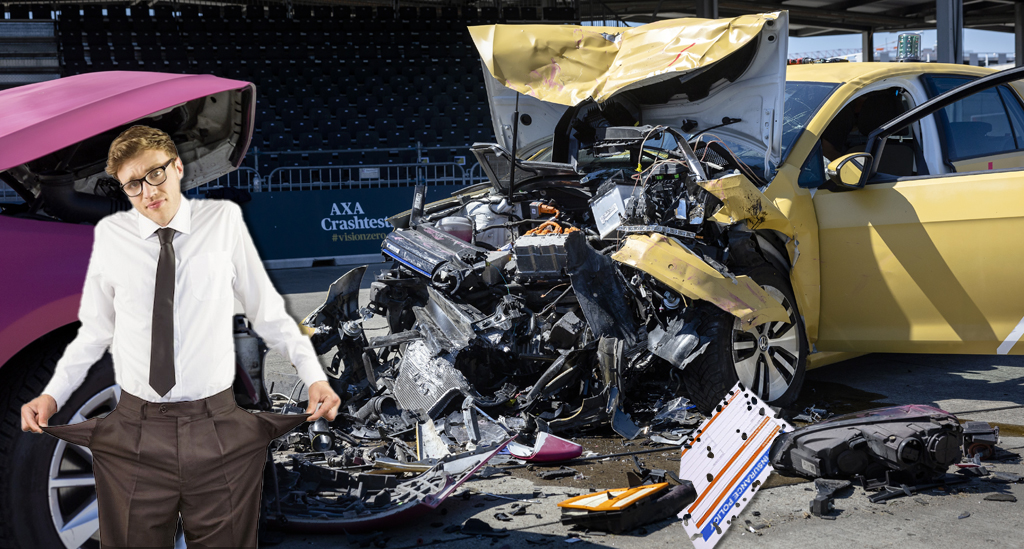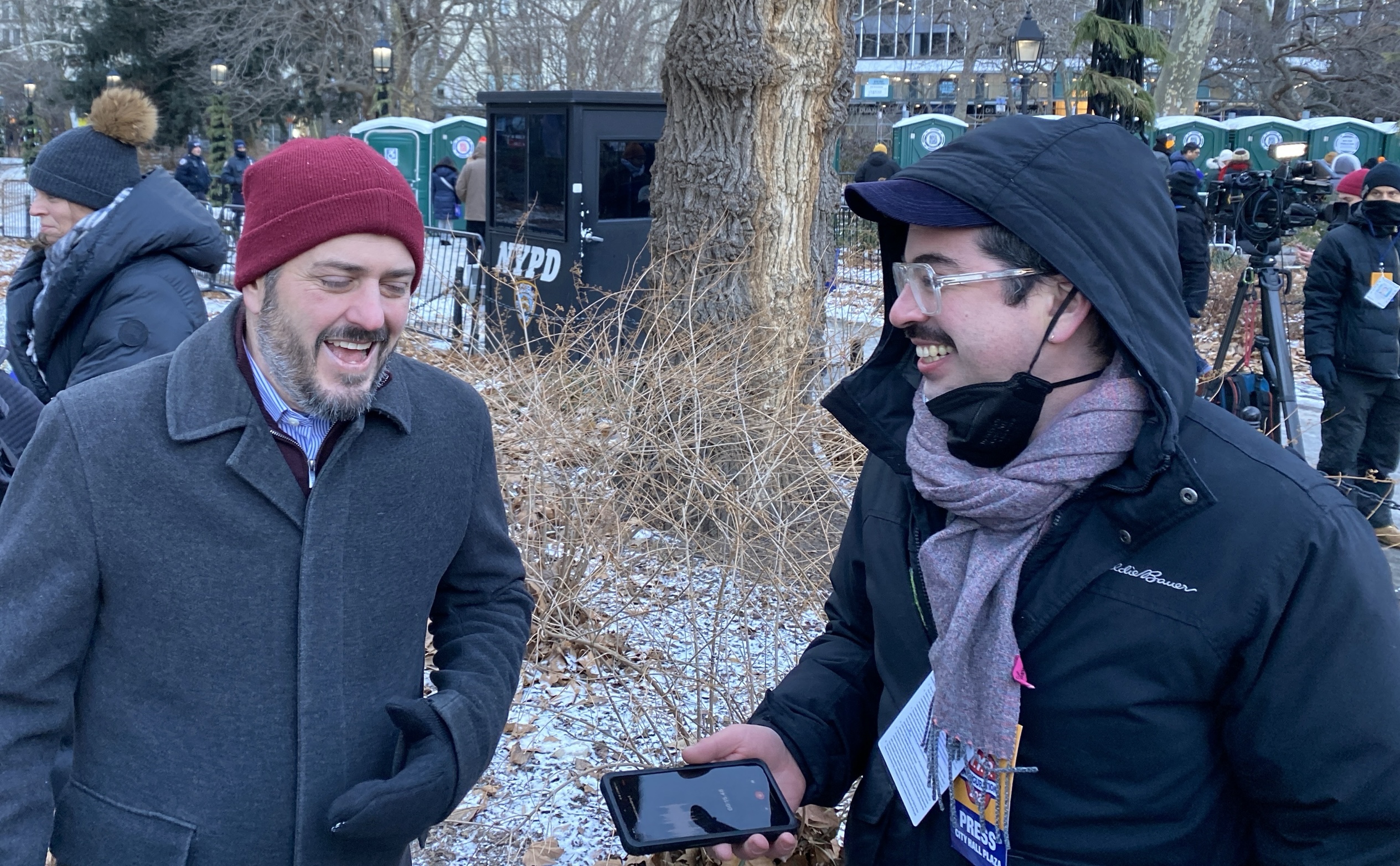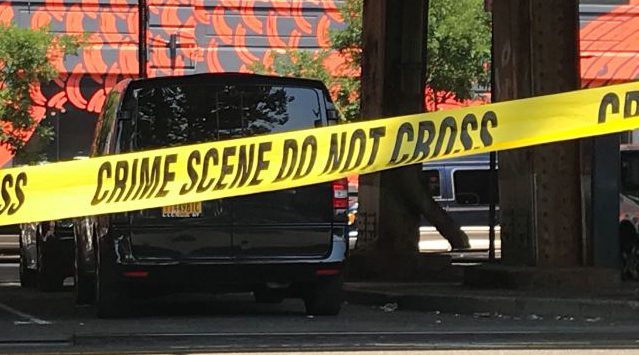A Manhattan City Council member wants to lower cab drivers' crash insurance coverage by nearly 90 percent — a move that would shift the costs of traffic violence onto victims instead of keeping it on drivers, legal and industry experts say.
The bill introduced last month by Council Member Carmen De La Rosa (D-Inwood) would reduce the minimum “personal injury protection" insurance that yellow cab, livery, and app-based drivers are required to carry from $200,000 to $50,000 — but that reduction in coverage would be borne by the people injured in crashes.
"That’s just really devastating to a pedestrian who gets struck by a car," said lawyer Victoria Wickman, who is also president of the New York State Trial Lawyers Association, which has pushed for higher insurance requirements.
"'Sorry we ran you over, but we’re not paying now for your medical bills.' I mean it’s really outrageous," Wickman added.
PIP insurance, also known as "no fault" insurance, is designed to quickly cover medical costs and economic losses — regardless of who is at fault. The city raised the minimum coverage level to $200,000 for drivers licensed by the Taxi and Limousine Commission in 1998 after a rash of high-profile crashes raised questions about taxi driver safety, according to reports. Adjusted for inflation that would be nearly $400,000 in today's money — meaning the reduction to $50,000 is a cut of more than 87 percent in real terms.
De La Rosa's insurance coverage minimum would match the statewide standard, but vulnerable road users need the higher coverage, according to Bruce Schaller, a former deputy commissioner at the Department of Transportation during the Bloomberg administration, who's now a taxi industry consultant.
"It's a bad idea exactly because pedestrians need the higher coverage, especially as huge numbers of pedestrians do not have car insurance of their own which would otherwise cover them," Schaller told Streetsblog in an email.
Costs stemming from crashes are unusually high in New York, said Sam Schwartz, a former cab driver who went on to become the city's Traffic Commissioner and Chief Engineer of the Department of Transportation in the 1980s.
"Two-hundred-thousand is next to nothing when you have a crash in New York with an injury, so $50,000 is way too little [coverage] for people who drive for a living," Schwartz told Streetsblog.
De La Rosa's legislation comes as the industry's largest insurer, American Transit, faces collapse, and a new company could come in and jack up monthly premiums, said the lawmaker, whose uptown district is home to many taxi drivers.
"The interest for me in carrying this bill comes from the plight of these drivers who have been telling me how the insurance premiums are so high," she told Streetsblog. "They’re paying every single month exorbitant fees, and then the coverage is sketchy at best."
Drivers pay around $4,000-$5,000 per year in premiums, according to the TLC, but those fees vary depending partly on the motorist's record.
On the other hand
De La Rosa argued that most injury claims don't reach the higher state benchmark anyway. The higher requirement also encourages more fraudulent claims, she added.
"It’s an exorbitant amount that is kind of arbitrary. The $50,000 more than covers it, is what I’m hearing from the industry, as someone who’s not an expert in insurance and liability insurance," De La Rosa said.
The disparity goes the other way for liability insurance, where drivers in the city have to carry at least $100,000 in insurance to cover long-term care and damages, as opposed to $1.25 million anywhere else in the Empire State, Streetsblog previously reported.
Matt Daus, a former TLC commissioner who was general counsel to the oversight body at the time of the reforms 24 years ago, agreed that not many claims go up to $200,000, and said that the decades-old law warranted revisiting.
"I think it’s worth a look," said Daus, who now works at the law firm Windels Marx focusing on transportation. "We have to look at that it doesn’t catastrophically impact seriously injured people."
It's unclear whether the bill would actually lower premiums, since companies can still set higher monthly charges, even if the required coverage is lower, Wickman said.
"There’s absolutely no equation that because you’re lowering no-fault PIP coverage, that that’s going to decrease premiums," she said. "There’s absolutely no correlation between the two."
Premiums don't usually go down as much as coverage does, according to Schwartz.
"It’s usually not so dramatic a reduction," he said. "I’ve tried to lower my insurance, and it’s not commensurate with the percent reduction in the maximum."
De La Rosa claimed that it will lower costs for drivers, but added that as part of the bill's hearing, there will be a fiscal impact statement.
"Every driver has a different type of insurance, but they believe that on a monthly basis it will lessen the amount of money that’s coming out of drivers’s pockets," the pol said.
Crash test monies
There were 5,650 injury-causing crashes involving cabs in the 12 months between Sept. 1, 2023 and Aug. 31, 2024 — or 15 injuries per day, according to TLC data. For most of the 1990s, that number cleared 10,000 per year, including 12,922 in 1998, the year of the reforms, according to a 2004 study on taxi and livery driver safety by Schaller.
The number of TLC drivers ballooned over the last decade with the arrival of apps like Uber and Lyft to more than 117,000 licensed vehicles.
However, healthcare costs have also soared, and $50,000 barely buys a hospital stay, and crash injuries can require intense procedures and months of rehabilitation.
"Most people that get struck by a car are going to have more than $50,000 in medical bills," said Wickman.
She said that client of hers who was struck by a driver and suffered a leg injury had to pay far above even the current required no-fault coverage.
"She gets smashed and she had her entire leg, probably 40 pins, three plates, young runner, she’s 26 years old," Wickman said. "She had to be on external fixation devices … then she had to have surgery, then she had to go to rehab. So her hospital bill was way over $200,000."
Instead of reducing the requirements for the city, the statewide minimum should rise to meet the city, she said.
With the driver's insurance no longer picking up $150,000 in coverage, that cost would shift to the victim's health insurance, whether it's private or government covered like Medicare and Medicaid.
Any payouts the victim gets later from the driver's liability insurance would likely go back to health insurers, since they often put a lien on those payments to make up for their coverage, Wickman said.
That means if someone injured gets another $100,000 in liability insurance payouts later on, for example, his or her health insurer could claw that money back to recoup its expenses, the legal eagle explained.
"It'll exhaust the whole thing, the patient will see absolutely zero compensation for any pain and suffering," the attorney said. "This hand goes to pay the other hand and the one who gets injured doesn't see a dime."
She also questioned that lowering the coverage would necessarily reduce fraud, adding that phony medical claims might continue regardless, since they usually target several lower-cost treatments, as opposed to just a few expensive medical procedures.
The city could also, for example, require taxi or for-hire vehicle riders to pay a surcharge to offset any higher insurance costs, instead of saddling crash victims with more payments, Wickman said.
If officials did more to improve street safety, that would also bring down insurance costs due to a lower likelihood of crashes, noted advocates with Transportation Alternatives.
"TLC drivers spend more time on the road than other drivers and should be insured in a way that recognizes that," said the organization's Interim Co-Executive Director Elizabeth Adams in a statement. "There is a very real physical, emotional, and financial toll of traffic violence — and the only path forward is to fundamentally change our streetscape, not sticking victims with the bill."
De La Rosa said she was open to having conversations about other measures, and that her bill will have a hearing and a financial analysis with more details about the potential effects, but she also worried that more expensive rides could hurt people who need them to get around.
"When I think about my community and I think about the type of people that would call an Uber … it would be someone who is trying to get to a doctor’s appointment, or the A train isn’t working," she said. "Passing on that cost is probably going to lessen the incentive for people to getting in these cars, which some could argue is a good thing, and they will argue is their livelihood."
"The introduction of this bill is like an entree to that conversation," the pol added. "It’s a good opportunity for us to take stock at where we are with the industry that has changed significantly in the last decade and then see where other solutions can be derived."
The TLC is reviewing the bill, according to a spokesperson. It has four sponsors total at this point.






